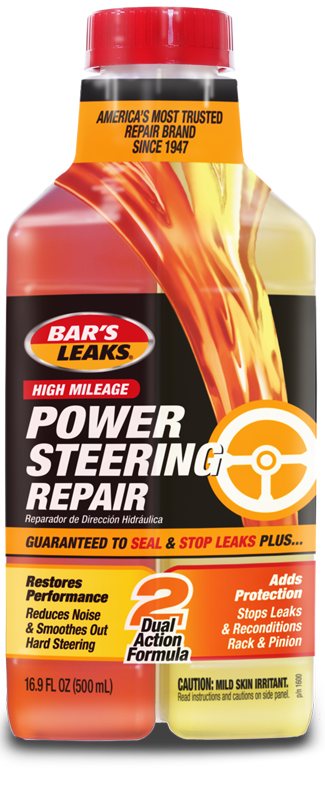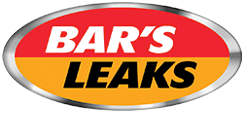If your power steering system is functioning properly, you won’t think about it at all. Responsive steering is something we have come to expect from our cars to such an extent that it’s hard to believe there was ever a time before power steering.
When you encounter power steering problems, you quickly learn how important this system is. In addition to making driving uncomfortable and inconvenient, a loss of power steering could hurt your ability to avoid other cars and to generally drive defensively. It can also make parallel parking a nightmare. So, what are the most common types of power steering problems, and what can you do about them?
We know a thing or two about this, so here’s the quick rundown.
Loss of Hydraulic Power
 Power steering works by using the fluid in the system to provide a hydraulic assist as you turn your steering wheel. If you experience a loss of this hydraulic power, you will struggle to turn the wheel – all of your hydraulic advantage will be gone. This loss of power means that there is not enough pressure forcing the power steering fluid through the system. There are four common reasons why you may be experiencing power steering fluid problems.
Power steering works by using the fluid in the system to provide a hydraulic assist as you turn your steering wheel. If you experience a loss of this hydraulic power, you will struggle to turn the wheel – all of your hydraulic advantage will be gone. This loss of power means that there is not enough pressure forcing the power steering fluid through the system. There are four common reasons why you may be experiencing power steering fluid problems.
- Power steering fluid leaks – The first and most common reason to consider with respect to why you are not getting enough power from your power steering is you may have one or more leaks in your system. You constantly have fluid being forced through your power steering hoses at high pressure, so it is not at all surprising that one of those could at some point spring a leak. If this is your problem, you will need to replace your power steering fluid and find ways to stop the leaks from causing you to lose fluid in the future. We can help, more on that later.
- Power steering pump – Your power steering pumps are what force the power steering fluid through the system to create the hydraulic pressure you need. Even if you have enough power steering fluid in the system, if the pump isn’t working properly, you will not get adequate power steering. It’s hard to know if your problem is being caused by a fluid leak or a worn out pump, although some signs of pump problems are a humming or whining noise when you try to steer and the fact that your power steering fluid reservoir is relatively full even though you are not getting power steering. If this is your problem, you will need to replace the pump, so you want to exhaust all other possibilities before assuming that this is the source of your power steering issues.
- Clogs in the power steering system – A rarer problem that can lead to loss of power steering is a clog in your power steering system. In some cases, rust from worn components or contaminants from dirty power steering fluid can combine to create a block of debris that restricts the flow of power steering fluid through your system. If this happens, you will not get the pressure you need for your power steering to work properly. Clogs can be hard to diagnose as they are very difficult to locate in the system.
- Air in the power steering system – A related problem to a clog — although with different causes — is air in your power steering system. The more air there is in your power steering fluid, the less liquid there is available to create hydraulic pressure. This can be a deceptive problem because you may not notice a particularly low level of liquid in your reservoir, leading you to believe you have a pump problem. Fortunately, the same solutions that you try for a fluid leak can be tried for air in the system, because it is usually caused by loose seals or bad O-rings that allow air to leak into the system.
What to Do About Power Steering Problems
Since leaks and faulty O-rings are both the most common power steering problems and usually the cheapest to fix, it is best to proceed as if this is the problem. Your first step should not be to take your car to a mechanic. If you do, no matter what the problem is, you can be certain that the repair will be at significant cost to you.
 Before doing anything else, try refilling your power steering fluid while adding a Bar’s Leaks power steering repair product to your system, like Bar’s Leaks Power Steering Repair, Super Leak Fix or Power Steering Stop Leak Concentrate. These products have sold hundreds of thousands of units and are specially formulated to fill the leaks in your power steering system, restore O-rings and other seals and bring your power steering back to working order.
Before doing anything else, try refilling your power steering fluid while adding a Bar’s Leaks power steering repair product to your system, like Bar’s Leaks Power Steering Repair, Super Leak Fix or Power Steering Stop Leak Concentrate. These products have sold hundreds of thousands of units and are specially formulated to fill the leaks in your power steering system, restore O-rings and other seals and bring your power steering back to working order.
If you suspect your problem is a clog in your power steering system, you should first drain and flush out the power steering system, and then add fresh power steering fluid and a Bar’s Leaks stop-leak power steering fluid additive. Draining and flushing your power steering system is a fairly simple procedure, and you do not require a mechanic to do it. If you have ever drained and flushed your oil, you can drain and flush your power steering fluid.
If a Bar’s Leaks power steering product — used as directed — works, you will know the problem was a leak, and you will have resolved it without incurring an expensive repair bill. If it does not, you can proceed to other options like taking your car to a mechanic to find out if you need your power steering pump or hoses replaced.
Nine times out of ten, though, your power steering issue will be fluid-related.
Bar’s Leaks products are often referred to as a “mechanic in a bottle” because many of these products are an affordable alternative to a mechanic for minor repairs, especially leaks. These are time-tested products that are superior at plugging oil leaks, coolant leaks and power steering leaks. If you’re not sure where to buy Bar’s Leaks power steering repair products, you can find a store nearest you with this simple Bar’s Leaks locator. If you have any other questions about our products or how they can work to resolve your power steering issues or other engine issues, contact us online today.

